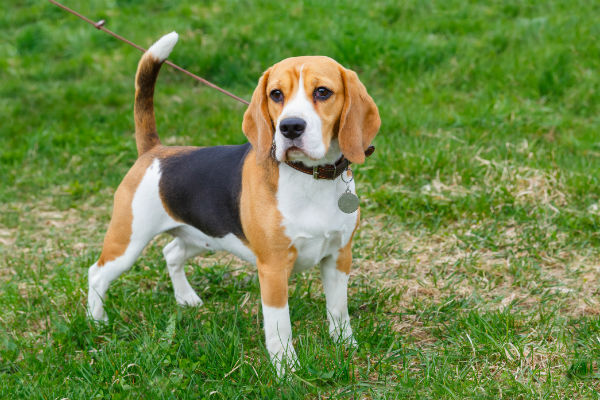Mar 3, 2019
Step 1: Training Your Dog to Walk on a Leash
Introduce him to the collar or harness and leash. Start out by letting him get used to wearing a collar or harness and a leash. Let him wear them for short periods of time, in the house, during which you are playing with him and giving him treats. The puppy should love “collar and leash time” because it represents food and fun.
Teach a cue. Introduce your puppy to a sound cue that means “food is coming.” Some people like to click and treat, some people use a word like “Yes,” and some people cluck their tongue. Whichever you use, the method is the same: In a quiet, distraction free area, with the puppy on a leash and collar, make the sound. The second your puppy turns toward you and/or looks at you, reward him with a treat. After a few repetitions, you’ll notice your puppy not only looking at you, but also coming over to you for the treat.
Make him come to you. While he’s on his way to you, still wearing the leash and collar, back up a few paces and then reward when he gets to you. Continue the progression until your puppy, upon hearing the cue noise, comes to you and walks with you a few paces. Remember that puppies have short attention spans, so keep your sessions short, and end them when your puppy is still eager to do more, not when he’s mentally exhausted.
Practice inside. Now that your puppy understands how to come to you, practice walking a few steps in a room with little distraction. Feeling and seeing the leash around him will be enough of a challenge. Offer treats and praise as your puppy gets used to coming to you, as described above, with a leash on.
Take it outside. Finally, you’re ready to test your puppy’s skills in the Great Outdoors. There will be new challenges with this step as all the sounds, smells, and sights your puppy encounters will be both intriguing and new to him. Be patient; keep the first walks short. While you’re on a walk, if your puppy looks as if he’s about to lunge towards something or is about to get distracted (you’ll notice this because you will keep your eyes on him at all times!), make your cue sound, and move a few steps away and reward his following you with a treat.

Step 2: Leash-Training Troubleshooting
As perfect as you want to pretend your puppy is, you’re likely going to run into some issues as he learns to walk on a leash. (And eventually, you’ll want to teach him loose-leash walkingso that he can pass his Canine Good Citizen test!) Here are a few tips on what to do if you’re having trouble, courtesy of the AKC GoodDog! Helpline.
If he pulls: If your dog starts pulling in the other direction, turn yourself into “a tree.” Stand very still and refuse to move until your dog comes back to you. Do not yank or jerk the leash, and do not drag your dog along with you. Alternative harnesses, like front-hook harnesses, and head halters are designed for dogs that tend to pull.
If he lunges: If your dog is going after something while on a walk — another dog, a car, or skateboarder, for example, try to redirect his attention with a treat before he has a chance to lunge and create space between you and the target. Be proactive. Get prepared before the target of his frustration gets too close. This type of behavior is more common in herding breeds, who like to chase.
If he barks: Some dogs have the habit of barking at other dogs while on a walk. Oftentimes, this behavior comes as a result of lack of exercise. Make sure your dog gets the proper amount of mental and physical stimulation for his breed. If this is still a problem, use the same process as you would if your dog is lunging at a ca r— create distance and offer treats before he starts to bark.
Gradually you’ll reduce the amount of treats and troubleshooting that your puppy needs during a walk, but you’ll always have some on hand to randomly reinforce good leash walking behavior!
Having trouble with these or other puppy behaviors? Contact the experts at the AKC GoodDog! Helpline for personalized tips and techniques.

